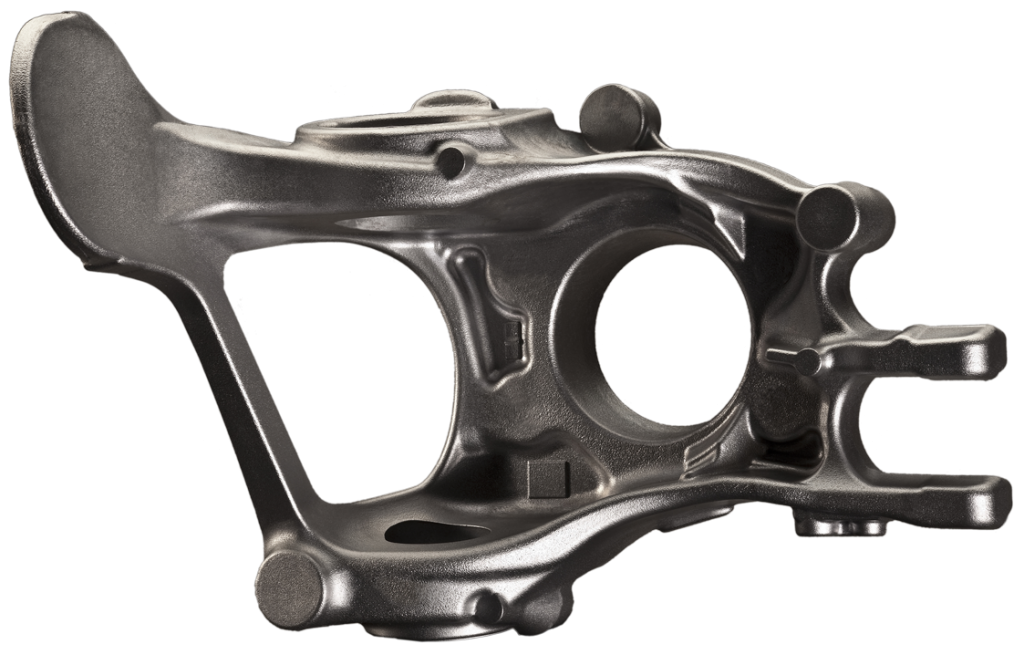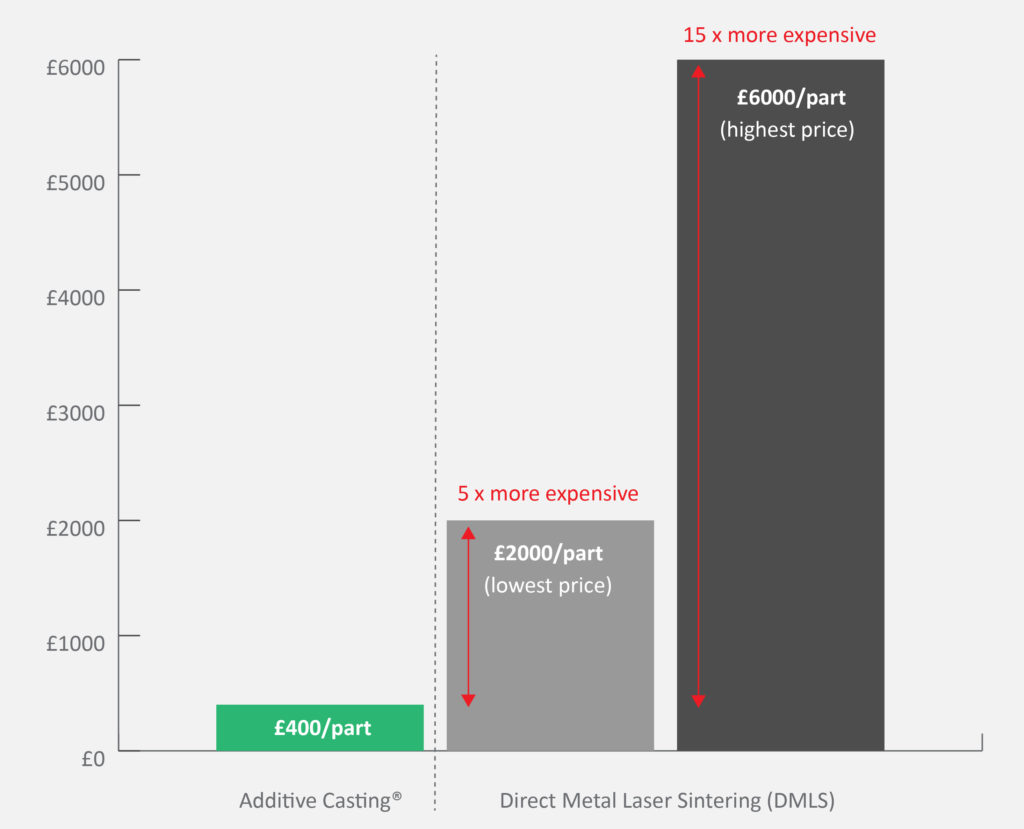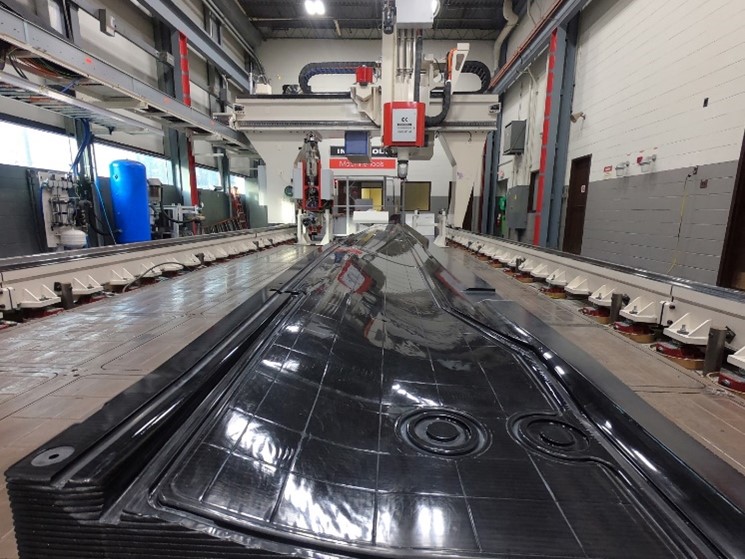UK-based metal 3D printing service Enable Manufacturing has announced the launch of its new Vacuum Additive Casting process which it claims can manufacture metal parts at a fraction of the cost of direct 3D metal printing.
Like the other additive casting processes offered by Enable Manufacturing, the process is based on a hybrid approach to 3D printing molds and patterns for casting parts, but also uses a vacuum casting technique to draw the metal into fine structures. This facilitates the production of highly complex and small parts with thinner walls at a lower cost than both traditional metal manufacturing processes and direct metal 3D printing.
“With the addition of Vacuum Additive Casting to our portfolio of processes, we now have a complete offering for the manufacturing of metal parts available from just a few grams up to 60 tonnes,” said Phil Kilburn, Sales Director at Enable Manufacturing.
“And with a cost reduction potential of 80 percent or more compared to direct 3D metal printing, we are confident that many manufacturing businesses will benefit from using our new Vacuum Additive Casting process.”

Enable Manufacturing’s additive casting process
Founded in 2019, Enable’s additive casting technology combines 3D printing and traditional casting techniques to manufacture complex metal parts of any size cost effectively. Producing molds via additive manufacturing allows the company to offer the material choices of traditional casting without the limitation and high cost of tooling.
According to Enable, while metal 3D printing is seeing wider adoption for the production of end-use parts, in addition to speeding up prototyping processes, the technology is hindered by a limited material range compared to traditional processes. The company believes its additive casting technology offers the “best of both worlds”, as it is able to produce parts in over 130 different metals at a lower cost than metal 3D printing and conventional manufacturing techniques.
Alongside its latest Vacuum Additive Casting process, Enable also offers Investment Additive Casting for parts with fine detail up to 250 x 250 x 250 mm, and Sand Additive Casting for large parts up to 60 tonnes.

Making 3D printed metal parts cheaper
Enable Manufacturing hails its new Vacuum Additive Casting process as a “game changer” for the production of metal parts, offering manufacturers a number of unique advantages. The process is suited to the production of small and highly intricate parts for rapid prototyping applications or part volumes up to 100,000 per year.
Comparing the price of its Vacuum Additive Casting process to that of Direct Metal Laser Sintering (DMLS), the company was able to produce a lattice structure with 1.5 mm wall thickness at 20 percent of the price of DMLS.
Producing the lattice via additive casting cost around £400 per part, while the lowest price using DMLS was five times more expensive at £2,000 per part, and the highest DMLS price of £6,000 per part was fifteen times more expensive than the Vacuum Additive Casting process.
Casting parts also provides manufacturers with a wider choice of metals compared to direct metal 3D printing, and part production can be scaled while part quality remains high. Scalability, material properties, quality and cost are some of the well-known challenges to increasing the adoption of metal 3D printing, which Enable sees as a “natural market gap” for hybrid manufacturing technologies like Additive Casting to grow.

Combining 3D printing and casting
Deploying 3D printing for the creation of molds for casting manufacturing processes is nothing new, and several other companies have taken advantage of the technology’s benefits.
One such firm is German machine tool manufacturer TRUMPF, which has highlighted the value of 3D printing in complex mold making through its TruPrint 1000 system, capable of producing near-net-shape molds with a conformal cooling system built into the mold.
In January, the University of Maine secured $2.8 million in funding from the US Department of Energy to develop a more eco-friendly method of 3D printing wind turbine blade molds. As part of the project, Oak Ridge National Laboratory will also integrate 3D printed heating elements into the mold in an attempt to speed up the research and development of green energy technologies.
Most recently, manufacturing system provider Ingersoll Machine Tools used 3D printing to produce a 22 foot-long mold designed for the production of helicopter rotor blades. The project resulted in major lead time savings, with the mold taking 75 hours to print in comparison to the traditional build cycle for an aluminum mold of that size usually taking between four and five months.
Elsewhere, 3D printed molds have been used for the production of clear dental aligners and for hearing aids in the Middle East. Companies such as 3D Systems, voxeljet, and Soliscape have also released 3D printers specifically for casting and molding applications.

Subscribe to the 3D Printing Industry newsletter for the latest news in additive manufacturing. You can also stay connected by following us on Twitter and liking us on Facebook.
Looking for a career in additive manufacturing? Visit 3D Printing Jobs for a selection of roles in the industry.
Featured image shows lattice structure with 1.5mm wall thickness made with Vacuum Additive Casting. Photo via Enable Manufacturing.



